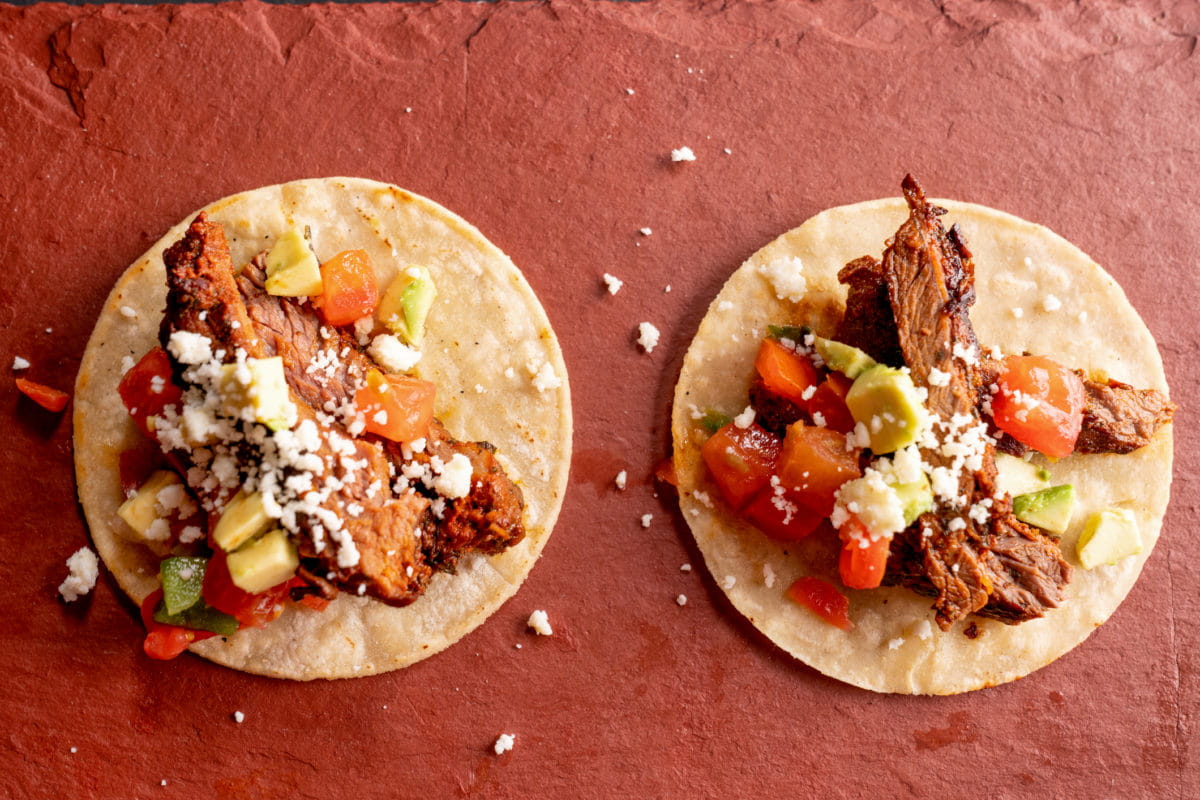What's Next in Clean Label: 2020 FONA National Clean Survey Special Report
November 16, 2020
Click Here for the full report!
Opportunities in Clean Label —A Four Year Comparison
Clean before it was cool. Over 16 years ago, we began exploring what health and wellness means to consumers as it relates to claims, taste and flavors. In 2016, we commissioned a nationwide survey to dig deeper into the clean taste movement and discovered that clean was not a fad, and in fact spanned all categories within the food and beverage industry. This year we are taking another deep dive into clean claims and consumer sentiment. Through our proprietary, national research, we’re exploring — what has changed in the last four years? Where should you, as a product developer, place your energy? Let’s see how you can capitalize on clean, to meet the ever-changing needs of today’s consumer.
Clean Label Still Not Defined
There is no legal definition for “clean” or “clean label” which makes it open to interpretation by consumers and the food and beverage industry alike. For many, the idea of clean label is the elimination of ingredients, authenticity of the product and trusting that it is safe to consume. When asked if clean and/or natural ingredients are important, 86% of our consumers stated “yes,” an increase of 4% from 2016. When asked in 2016 “how do you define clean label?” consumers stated that they were unsure. Today consumers define clean label as “natural,” while the answers of “unsure” and “organic” ranked second and third respectively.
86%: Percentage of consumers that say clean/natural ingredients are important.
In the Market for Clean
The market for clean label is significant, with Euromonitor estimating that global clean label food sales in 2020 will be worth an estimated $180 billion with an increase of $15 billion from 2015.
Recognized as Clean Label
We asked consumers to select the items listed that they believe are clean label. As it relates to natural flavors, colors and sweeteners, consumers believe they meet their expectations of clean label.
89% natural flavors
88% natural colors
83% natural sweeteners

Healthy Purchase Drivers on the Rise
Taste and ingredients are the top attributes influencing product purchase, but when it comes to clean label, consumers are willing to pay more, when it matters most. Whether it is recognizable ingredient statements, all natural or even non-GMO, consumers are overwhelmingly willing to pay more. Compared to 2016, we are seeing an increase in all area as it relates to consumers willingness to pay more. According to our research, when purchasing a product, only 17% of consumers use price as a determining factor. This is a decrease of 7% from 2016.
Purchase Drivers:
The purchase drivers with the largest growth from 2016-2020 include: all-natural (14%); organic (12%) and recognizable ingredients (12%).
Product Claims and Ingredient Statements
Within the food and beverage industry we tend to focus on product claims, ingredient statements and the nutrition facts panel when formulating a product. While consumers are aware that these are present, not all consumers are not actively checking there when purchasing products for the first time. According to our research, 37% of consumers look at the nutrition facts panel “most of the time” when purchasing a product for the first time and 24% “always” view it.
Where are consumer looking to first when purchasing a product for the first time?
- 44% front of pack claims
- 33% nutrition facts panel
- 23% ingredient statement
Number of Ingredients Decreasing in Importance
Over the past several years, we know that overall transparency into ingredients is top of mind for consumers. As consumers have gained exposure to types of ingredients and why they are used, we are seeing a decrease of importance in the number of ingredients that are acceptable to consumers. We know that consumers are reading the ingredient statements and are now becoming more comfortable with an increased number of ingredients in the ingredient statement. According to our research, the ideal number of ingredients a product should have still remains at five, with 41% of consumers stating that is their ideal number. This is a decrease of 4% from 2016.
- 38% of consumers state “the number of ingredients does not matter to me”
- 18% state ten ingredients is the ideal number
- 3% state 15+ ingredients is the ideal number
“Do Not Use” Lists
When we conducted our first survey in 2016, do not use ingredient lists were becoming very popular, with companies like Panera launching their “No-No Ingredient List” and discussing clean label transparency in their commercials. In addition, grocery chains such as Trader Joe’s, Whole Foods and even Kroger were very open with consumers about ingredients that were not acceptable in products available to purchase at their stores. In 2016 the overall awareness of “do not use” ingredient lists was only at 15% based on our survey, with the majority of consumers unaware that banned ingredient lists even exist. Fast forward to 2020 and the idea of “do not use” ingredients have taken a bit of a backseat and are almost unheard of beyond the original four, but we are seeing a 5% increase in overall consumer awareness in the lists overall.
Natural Gaining Appeal
Although the infamous “all-natural” product claim is one that is often disputed and still not defined by the FDA, it is continuing to gain momentum with consumers as a claim that is appealing when purchasing food and beverage products. When we asked consumers which product claims appeal to them most, natural was the top choice and increased by 10% from 2016-2020. Likewise, 86% of consumers stated that clean and/or natural ingredients are important to them, with an increase of 4% from 2016.
In an additional study conducted in partnership with Suzy.com, we asked consumers to select the food/beverage trend that is currently most important to them out of a list of 12 current trends and natural was rated the most important, with 68% of consumers selecting it as the most important.
New product introductions with an all-natural claim is on the rise with a 16% increase in global new products from 2016-2019, according to Mintel GNPD. Food products make up the majority of new products with 58% and beverage products only account for 15%. Europe is the key region with 32% of all-natural products being introduced in that region. North America is in the number 3 spot with only 19% of products, but is showing 14% growth in products with the all-natural claim from 2018-2019.
Natural - Price & Products
Price
Price is always an important factor to consumers as they try to stretch their dollars as they stock their pantries. 64% of consumers are willing to pay more for food and beverage products with an “all-natural” claim—this is an increase of 14% from 2016.
Product
As natural products have become mainstream product sales are definitely reflecting consumer adoption. The retail sales growth of natural foods and beverages is growing at a faster rate than the food and beverage industry as a whole—which is growing at 1.7% year over year, compared to 5% for the natural product market, according to SPINS State of the Natural Industry Report. SPINS is also reporting that the sales of natural food and beverage products were $47.2 billion in the past year and accounted for 29% of all food and beverage industry sales growth. This is most apparent in the convenience channel, where they are reporting 11% growth with key products like performance beverages, enhanced waters, puffed snacks, and kombucha driving overall growth.
30% of all consumers love ALL NATURAL
This places it in the 87 percentile among all foods & flavors
(consumers love All Natural more than 87% of all other items)
Product of Note
Quaker Oats Overnight Rolled Oats is outperforming its subcategory when it comes to the attribute of natural according to Mintel’s Purchase Intelligence. 87% of consumers rated this product as natural compared to only 62% for other hot cereal products on the market.

Expectation of Natural Flavor
As it relates to natural flavor, nothing artificial/no additives is still the expectation of our consumers and increased by 3% in our 4-year comparison. The verbiage, “contains natural ingredients” increased 9% in the same time period. In 2016, 6% of consumers stated “I do not know” when asked about their expectation of natural flavor—this year only 1% of consumers responded with the same answer as more consumers have gained awareness around natural flavors. Also, when purchasing food and beverage products, “contains natural ingredients” remains the most important attribute to 56% of consumers and is showing a 2% increase from 2016.
Natural Mentions on Social Media
Since 2016 there has been a 63% increase in consumer posts around natural with 33 mentions per minute according to Infegy Atlas The primary consumer is between the ages of 35-44 years old with 45% of all posts. The key consumer voice is female with 61% of all posts.
Consumers that post about natural are:
- 19 times more likely to be interested in nutrition
- 9 times more likely to be interested in food movements
Organic Increasing Reach
The organic market is one that meets consumer’s requirements of a healthy halo with purchase drivers that span from sustainable and transparent supply chains to a more holistic approach to a better-for-you lifestyle. Organic foods and beverages are now found in the kitchens of 82% of American households, according to Nielsen.
Safety is the primary driver for organic purchases, with the Hartman Group reporting that 39% of consumers purchase organic products because it is “safer for me/my family.” Our research is showing similar results with 92% of consumers stating “products that include organic ingredients are better-for-me” an increase of 2% from 2016. Priority sits firmly with purchasing organic products for their children with 66% of parents stating it is important to purchase organic food/beverages for their children, while only 43% of consumers stated it is important to purchase for themselves. Both are showing a 7% increase from 2016.
A Growing Market
Organic Sales
The sales of organic products are on the rise with the Organic Trade Association (OTA) reporting organic food sales at $55.1 billion in 2019 with growth of 5% from the previous year. Since 2016, organic food sales are showing 18% growth according to the OTA. This is consistent with overall consumer interest in organic products. According to our survey, 91% of consumers are interested in seeing more organic food and beverage products on store shelves, a 1% increase from 2016.
Product
New product introductions with an organic claim are continuing to expand their shelf-space with a 32% increase in global new product introductions from 2016-2019, according to Mintel GNPD. Food products make up the majority of new products with 58% and beverage products only accounting for 14%. Europe is the key region with 64% of organic products being introduced in that region. North America is in the number 3 spot with only 13% of products but showing 13% growth in the organic claim from 2018-2019.
Top Organic Purchases
Food (30%) and beverages (19%) are the top organic purchases for our consumers. Organic food purchases decreased 4% from 2016 while beverages remained at 19%. The purchase of organic gum and candy increased by 2%, according to our survey.
24% of all consumers love ORGANIC
This places it in the 79 percentile among all foods & flavors
(consumers love Organic more than 79% of all other items)

Category Growth
While produce may be the top purchased organic products according to the OTA, the organic condiment category is showing some of the largest growth overall. Sales of organic ethnic sauces (curry, chipotle, sriracha, and Korean BBQ) reached $77 million in 2019 with the largest growth rate on record of 23%.
Product of Note
Full Circle Market Organic Mild Salsa is outperforming its subcategory on all product attributes, according to Mintel Purchase Intelligence. Taking a closer look at better-for-you attributes, 76% of consumers rated this product as healthy, compared to only 34% for other table sauces on the market and 76% of consumers rated this product as natural, compared to only 36% for other table sauces on the market.
Worth it!
Price is always a topic of contention when it comes to organic products. Consumers know that they do indeed cost more, but 81% of consumers stated that its worth paying more for organic products and increase of 2% from 2016, according to our survey.
Expectation of Organic Flavors
As it relates to organic flavors, our research shows 88% of consumers believe that organic flavors meet their expectations of clean label.
We asked consumers to review several options for how an organic flavor can be listed on an ingredient statement. When purchasing an organic strawberry flavored cookie, 90% of consumers stated that “organic flavor” is the most acceptable, followed by “organic natural strawberry flavor” at 89%.
From 2016-2020, 100% organic is still the preferred labeling with 69% of consumers preferring this type of labeling, which is directly correlated to organic produce as the top purchased organic items according to the Organic Trade Association.
Organic Mentions on the Rise for Social Media
Since 2016 there has been a 57% increase in consumer posts around organic with 23 mentions per minute according to Infegy Atlas The primary consumer is between the ages of 35-44 years old with 48% of all posts. Key consumer voice is female with 58% of all posts.
Consumers that post about organic are:
- 23 times more likely to be interested in nutrition
- 12 times more likely to be interested in food movements
- 12 times more likely to be interested in personal care.
Gaining Consumer Trust
Trust is definitely an attribute that is necessary in all relationships, but when relying on a company to safely feed our families, it becomes a top priority. For many years, companies have been losing the trust of consumers as social media and other avenues have shed a light on actions that we were previously unaware of. In the past four years, we are seeing that gaining the overall trust of consumers is making a rebound, with 56% of consumers now at least somewhat likely to trust food companies to do what is right—this is an increase of 9% from 2016. Brand loyalty and trust go hand in hand when purchasing products. According to a recent Mintel survey, 51% of consumers tend to stick to brands they trust.
Consumers are beginning to seek out information beyond the traditional and look at the company as a whole and how well their values align overall with their own. Providing details around supply chain and recognition from third party groups for safety remain the top two ways companies can gain/maintain the trust of consumers, but we are seeing a 3% increase in awareness of community engagement as well a 3% increase in charitable acts. In addition, consumers are more likely to purchase from a company if it employs people in their area with 71% stating this, a 7% increase from 2016. Learning more about a company’s beginning or history is another way to influence purchases with 62% of consumers stating that they are likely to purchase from a company if they hear about their history. This is a 12% increase from 2016.
Clean Label Mainstream
Clean and natural ingredients are important to consumers and are becoming more mainstream and products are making their way into the shopping carts and pantries of consumers. In the past four years consumers have expanded their overall knowledge in the area of clean label and are now able to define clean label as natural first instead of stating they are uncertain of what it truly means. While there is still major headway that needs to take place to increase the overall knowledge of consumers of the clean label movement, the topic is slowing making its way from being strictly an industry term to one that consumers see as important and have specific expectations around. We know that consumers find value in clean label as we learned that they are willing to pay more for clean label claims and recognizable ingredients with all areas showing an increase in the past 4 years. As it relates to flavor, both natural and organic flavors meet consumers’ expectations of clean label. Trust is another area that is crucial within the industry and trusting companies to do what is right has increased over time and is ultimately driving brand loyalty.

FONA & You: Confident in Clean
We know that clean is a continuum, not a checkbox. Consumers have diverse needs, and your product and its ingredients should align with those needs, no matter where they land. FONA is the answer to “what’s next?” in clean. From concept to manufacturing, we’ll be at your side the whole way.
Interested in organic flavors? Need to dive deep into clean without losing that signature taste? Contact us today to uncover new insights and solutions for clean.
Your priorities are our priorities. Let’s talk.
Click here for the full report!
Order your free flavor sample here.
You deserve more. Let’s get started.
What does true partnership look like? You deserve a flavor partner ready to turn these trends into the tangible.
Let FONA’s market insight and research experts get to work for you. Translate these trends into bold new ideas for your brand. Increase market share and get to your “what’s next.” Our technical flavor and product development experts are also at your service to help meet the labeling and flavor profile needs for your products to capitalize on this consumer trend. Let’s mesh the complexities of flavor with your brand development, technical requirements and regulatory needs to deliver a complete taste solution.
From concept to manufacturing, we’re here for you — every step of the way. Contact our sales service department at 630.578.8600 to request a flavor sample or contact us at www.fona.com/contact-fona/
Sources in full report




